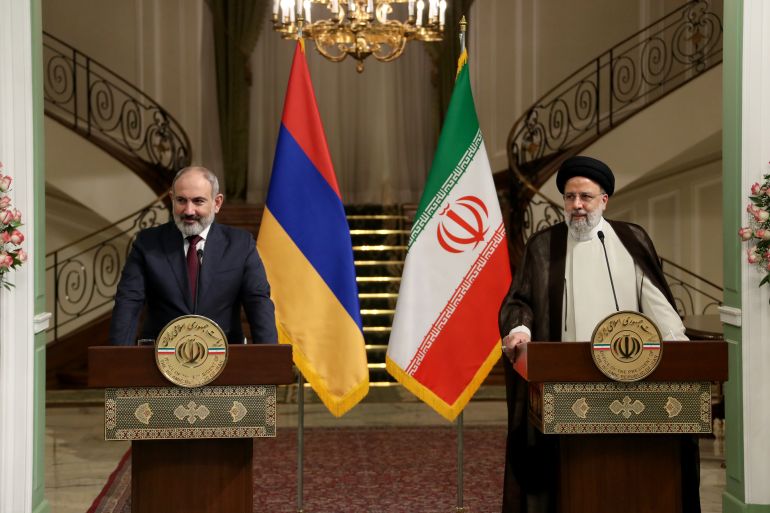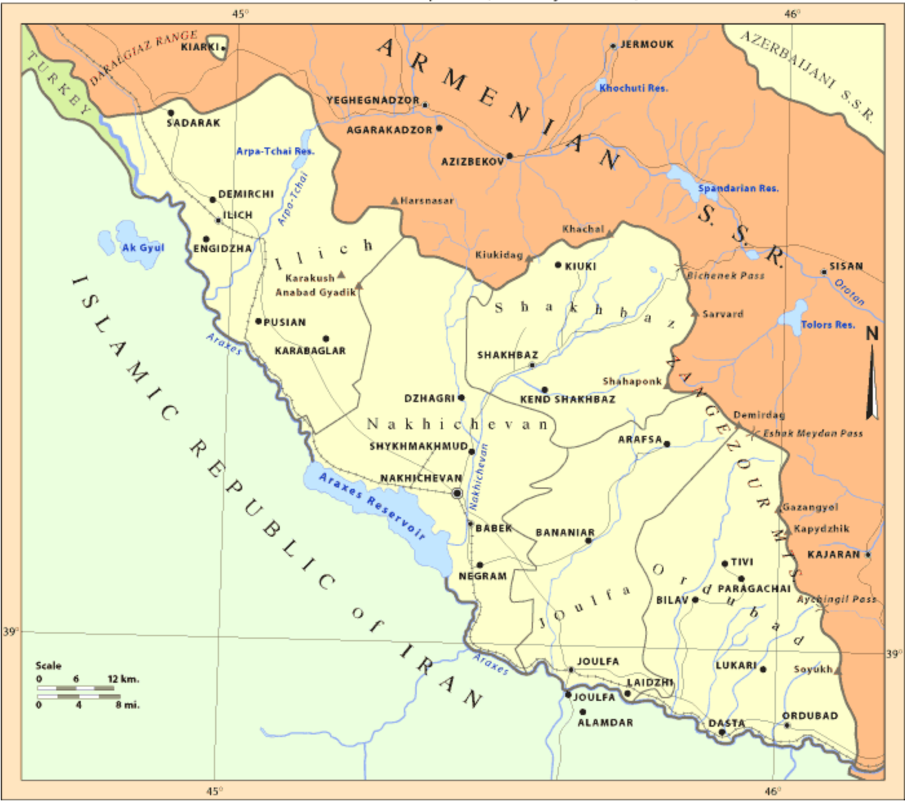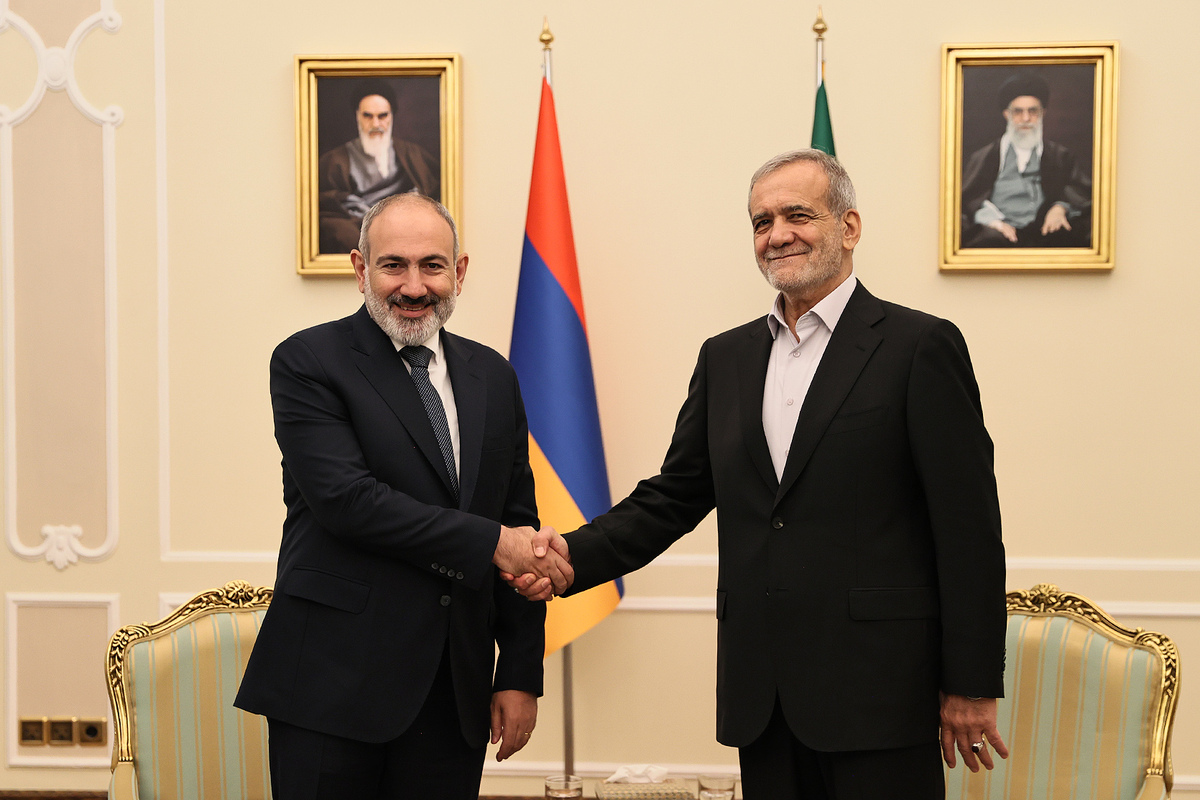
Relations between Armenia and Iran are a rare example of a neighbourhood that has survived major geopolitical upheavals while preserving a fundamental continuity. This link runs along the Araxes River and a border section modest in length but decisive in its uses. It carries issues of security, energy and trade, and also safeguards a regional grammar where caution matters as much as the assertion of power. Over the past two years, the small border has taken on the appearance of a lifeline for Yerevan and a red line for Tehran. Recent developments only sharpen this contrast, as the transit project between Azerbaijan and its Nakhchivan exclave, placed at the heart of a political and economic compromise negotiated in Washington, now compels Armenians and Iranians to spell out their interests, fears and conditions of coexistence, while reinventing their cooperation in energy and logistics.

The Armenian–Azeri agreement brokered by the United States in early August foresees a communication axis crossing southern Armenia. It marks a rupture in regional semantics as it replaces the logic of an extraterritorial corridor with a route under Armenian sovereignty, with the role of operator and developer entrusted to American actors. Its promoters see it as a pathway to de-escalation between Baku and Yerevan, accompanied by investments in rail, road and energy. Opponents interpret it as the installation of a lasting Western presence in a space Russia and Iran had until now considered a semi-closed sphere of influence. Within this balance, two Iranian concerns are expressed: preserving land contact with Armenia and avoiding infrastructure managed by outside forces near its north-western border. These concerns have translated into public warnings and intense diplomatic exchanges with Yerevan. For its part, the Armenian government insists that any route will remain under the control of its authorities and forces. The letter of the agreement, at this stage, grants Armenia full sovereignty over the project and its security. This point is central in the dialogue with Tehran.
Tehran considers the Zangezur issue a major strategic concern. Losing direct border contact with Armenia would weaken Iran’s access to the Caucasus and Eurasia, while benefiting the Turkey–Azerbaijan duo, in an already tense context with Baku. Iran therefore sets red lines against any form of extraterritoriality, to prevent the installation of foreign actors—especially of a military nature—near its border. At the same time, it remains open if the future route remains fully under Armenian sovereignty and integrated into non-exclusive regional agreements. This position has been reiterated throughout the summer during consultations with Yerevan.
The regional security environment is further complicated by the presence of the European Union’s civilian monitoring mission in Armenia, deployed along the border with Azerbaijan. Its extension and possible reinforcement constitute a signal of Yerevan’s gradual pivot towards the European Union. Azerbaijani authorities contest this mission, Tehran tolerates it with vigilance, while for Armenia it has a reassurance function in sensitive border districts. The strategic equation of Yerevan is no longer the same as in previous years: Russia, its traditional partner, has lost credit in the eyes of part of Armenian society and political elites, and the EU now occupies an increasing share of the diplomatic and security space, though still far from offering an explicit defence guarantee.
Armenian–Iranian relations do not rest solely on the security equation. Over time, they have expanded around an energy barter that has become structural. The oil pipeline is not at the heart of the story—it is the Iran–Armenia gas pipeline and the gas-for-electricity exchange, operational since 2009, that form the backbone. Armenia delivers kilowatt-hours produced on its territory in exchange for gas volumes supplied by Iran. The contractual framework has been extended and optimised, and a third high-voltage interconnector is nearing completion. This will triple electricity exchange capacity and raise the flexibility of the Armenian system to levels that reduce part of its perceived vulnerabilities. These elements count doubly—economically, since cheap energy secures competitiveness; politically, as they embody an interdependence difficult to reconfigure in the short term, even if Yerevan diversifies its sources.
The other pillar is logistical and Eurasian. Armenia and Iran speak in terms of non-exclusive corridors, avoiding the diplomatically toxic notion of “corridor”. The key lies in the North–South transport corridor and Iranian ports. Armenian operators’ access to the facilities of Chabahar and Bandar Abbas offers a promise of commercial continuity towards India and South Asia. It makes sense if Armenia’s so-called North–South highway, particularly the mountainous Syunik section, is delivered within reasonable deadlines. Iranian companies are indeed present on critical lots of this axis. The logic is clear: the more Armenia connects southward through Iran, the more Iran secures its own role as a bridge against logistical encirclement. This agenda does not exclude ties with the EU or exchanges with Georgia; on the contrary, it seeks a multiplicity of routes that immunises against political shocks. This is one of the rare points where Yerevan’s and Tehran’s interests converge almost without reservation.
On a symbolic level, Iran officially opened a consulate general in Kapan, the regional capital of Syunik, in 2022. This gesture was both a message and a consular service: it signified Tehran’s durable implantation in a zone it considers both buffer and gateway. At the same time, military exercises took place near the Araxes, reminding that Iranian diplomacy rests on a deterrent posture. Armenia interpreted this presence as a minimum assurance at a moment when its relations with Moscow were souring and Baku was hardening its demands. Iranian authorities have maintained this course, combining political proximity with firmness on geography.
This week’s developments add density to this fabric. Iranian President Massoud Pezeshkian’s visit to Yerevan led to a series of technical agreements on standardisation, certification and regulations, but above all to a public clarification on the future Armenian–Azeri axis. Tehran says it has received new guarantees, notably the absence of foreign forces and the primacy of Armenian controls. Yerevan insists on the sovereign and non-extraterritorial character of the project and on the long-term interest of a commercial de-escalation with Baku. These signals do not erase divergences but establish a negotiation ground that preserves the bilateral Armenian–Iranian relationship. The economy benefits as the two capitals also speak of doubling capacities at border posts and the goal of rapidly increasing trade.

One variable goes beyond the Yerevan–Tehran axis: Armenia’s strategic repositioning since 2023. The ratification of the Rome Statute and tensions with its Russian ally in the Collective Security Treaty Organisation have accelerated a search for new anchors. The European Union has offered civilian presence and funds, the United States mediation and infrastructure projects that redraw the map. Iran adjusts to this movement by prioritising local cooperation. Armenia’s goal is to transform inherited dependencies into chosen interdependencies; Iran’s goal is to avoid isolation in the Caucasus while benefitting from an Armenia that has become an energy and transport hub of the North–South axis. These trajectories may converge if Syunik’s security is maintained and if the rhetoric of extraterritoriality is definitively discarded.
Let us not forget the constraint of the terrain: sporadic violence and military pressure retain a veto power over even the best-designed plans. Armenia’s Syunik province lives to the rhythm of gunfire and reported incursions. Each incident exposes the fragility of arrangements. Iran monitors these risk signals, as a resumption of clashes would have immediate consequences on its own trade routes and border security. This is another reason for Iranian diplomacy to hold together principle and pragmatism. The principle: no weakening of direct contact with Armenia. The pragmatism: yes to projects if they remain under Armenian control and integrate into open corridors. Armenia, for its part, seeks deterrence through connectivity and international civilian presence. The equation remains delicate, but not insoluble.
Economically, however, a window of opportunity is opening. The strengthening of electrical interconnection—if delivered on time—will allow more Iranian gas to be absorbed in the exchange scheme. The transport of equipment and materials via Iran could offset closures or slowdowns on other routes. The operation of a second bridge over the Araxes and the modernisation of border terminals are being discussed by the two governments. Such a policy of modest but useful works can produce political effects greater than its apparent technicality. It lends credibility to discourses of stability and aligns economic interests which, by repetition, become resilience. In this register, Armenia and Iran enjoy a capital of trust that should be neither overestimated nor underestimated. Its value lies above all in its regularity.
The conceptual debate on corridors deserves a word, as it structures misunderstandings and tensions. For Baku, the corridor is a quasi-autonomous right of use guaranteeing territorial continuity with Nakhchivan. For Yerevan, the word corridor is a trap, as it suggests an infringement of sovereignty. For Tehran, vigilance focuses on any form of extraterritoriality and foreign presence near its border. The newly announced agreement attempts a middle path: a route and installations on Armenian soil under Armenian control, with foreign development operators but no sovereign prerogatives. If this arrangement is sustained over time, Iran may find sufficient guarantees—and even gains—by becoming the natural southern route for flows linked to Armenia, provided these flows do not replace the North–South but connect to it. Armenian diplomacy plays with safeguards that demand consistency and pedagogy; Iranian diplomacy responds with a blend of strategic orthodoxy and commercial flexibility.
The most sensitive element remains political trust. To reinforce it, the idea of a discreet trilateral mechanism between Armenia, Iran and the European Union on border infrastructure security deserves exploration. Not as a substitute for Armenian–Azeri discussions, but as a safety net. The capitals could aggregate technical transparency, alert-sharing and routine inspections. Such a mechanism would not threaten Iran’s red line if limited to civilian means and backed by Armenian rules. It would strengthen Yerevan’s argument that its sovereignty is better guaranteed by a plurality of partners than by a single dependency, and it would provide Tehran with a trust lever. This page is not yet written, but it naturally arises in the wake of August’s announcements.
In the background, the societal and cultural dimension should not be overlooked, even if it weighs less in power relations. The Armenian communities of Iran, their business and educational networks, academic dialogue and circulation of artists have long served as a silent link between the two countries. In a period where the region is being reshaped by infrastructures and connectivity rivalries, these soft and often invisible ties are buffers. They do not abolish interests but humanise them. Armenia and Iran know that security architecture will hold only if tangible benefits flow into the daily lives of Araxes border residents. Current affairs bring spectacular announcements; stability will be built in the patience of projects, the quality of controls and trust between service windows.
Final point: if one had to summarise the moment, Armenia and Iran stand at the edge of a footbridge that may become either a bridge or a fracture. It will depend on how a purportedly pacifying axis is implemented. If this ribbon of asphalt remains Armenian in substance and open in use, if it is underpinned by upgraded energy and logistics exchanges with Iran, then the neighbourhood may transform geography into a common good. If, on the contrary, mistrust prevails, the border will once again become a wall and the Araxes a moat. At a time when maps are being redrawn, wisdom lies in preferring crossing roads to parallel lines that ignore one another. Poets say rivers never mistake their sea; it is up to decision-makers to ensure politics does not mislead the current.
Sources
- Reuters – Iran threatens planned Trump corridor envisaged by Azerbaijan-Armenia peace deal
- Financial Times – Trump could transform Caucasus with Armenia-Azerbaijan peace
- RadioFreeEurope/RadioLiberty – Armenians React To US-Brokered Deal With Azerbaijan
- IRAM Center – The Zangezur Corridor and Iran's Strategic Calculus
- Jamnews – Iran's position on the Zangezur Corridor
- Iran International – Iran pushes back on Zangezur corridor deal, sets talks with Armenia
- Civilnet – EU observers to continue work in Armenia
- New Eastern Europe – Armenia's shifting foreign policy towards the European Union
- Jamestown Foundation – Iran's Gas Export to Armenia: From Energy Imbalance
- Tehran Times – Iran extends gas-for-electricity swap deal with Armenia
- Arka – Armenia to finish construction of Iran-Armenia overhead power line
- PanArmenian – Project to triple electricity exchange capacity with Iran
- IEA – Armenia 2022 Energy Policy Review
- The Armenian Weekly – What does the India-Iran Chabahar port deal mean for Armenia?
- APRI Institute – The Geopolitical Aspects of the India-Armenia Partnership
- Al Jazeera – Iran opens consulate in Armenia's Kapan
- Al Jazeera – Iran's president visits Armenia for talks on US-backed corridor
- Iran International – Armenia has pledged to respect Iran's red lines
- Carnegie Endowment – Could Armenia's Bid for EU Integration Finally Bring About Change?
- RadioFreeEurope/RadioLiberty – US Management of the Zangezur Corridor
- Reuters – In Armenia, rising ceasefire violations bring fears of war with Azerbaijan
- Hindustan Times – Armenia hails ties with Iran after US-brokered peace deal
